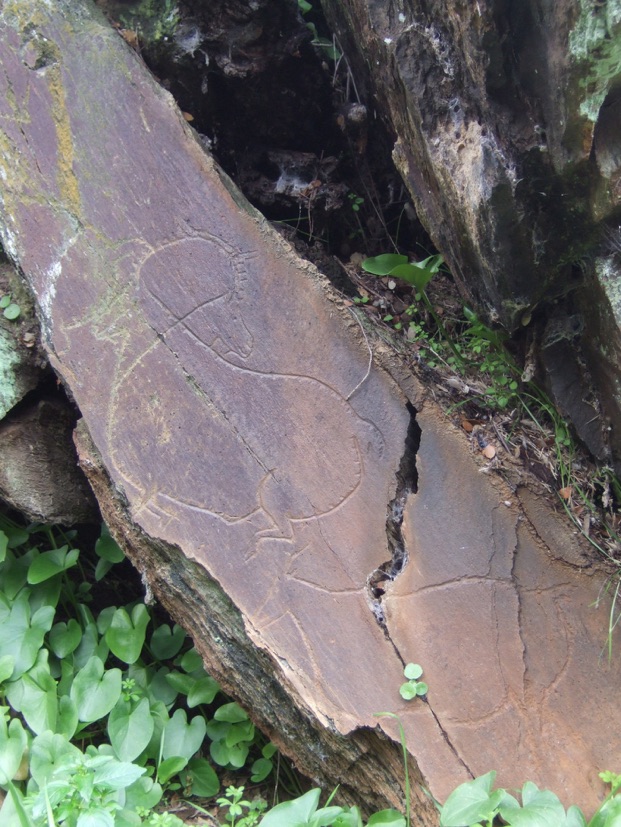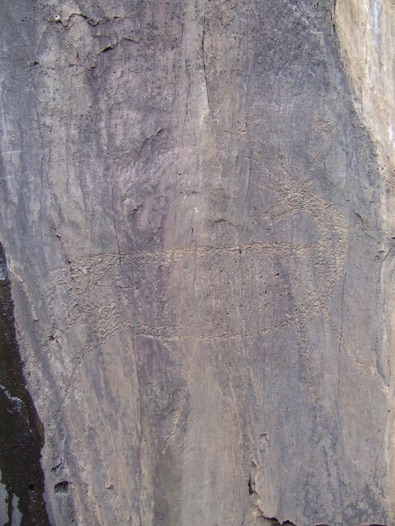Prehistoric Art Emergency


The History of an International Petition Campaign
to Save the Côa Valley and its Petroglyphs
from Flooding
In November 1994, the world learned that the government of Portugal and state-owned electrical utility had kept silent about the discovery of a huge assemblage of animal petroglyphs, which looked as if they were Upper Paleolithic, while starting construction of a three-hundred-million-dollar dam. The open-air engravings were unique both in their richness above ground and astonishing illustrations of movement - with animals tossing their heads with the same stop-action dynamism found in the Chauvet Cave and millennia later in photography and Futurist painting. Standing in front of spectacular engravings, the Secretary of State for Culture dismissed them as being nothing more than “children’s doodles” – whereupon the students from Foz Côa’s high school turned him into a laughing-stock by presenting him with a schist slab covered with their own scribblings. In an on-going cover-up and attempt to diminish the find’s exposure, journalists from the BBC and elsewhere were barred from the valley – and the electrical utility, or EDP, hastened to erect the mighty concrete wall that would doom the engravings under both the alluvial deposits that accumulate behind dams and 100 meters of water. The cover-up of the art’s very existence by the utility and Portuguese national archaeological authority, or IPPAR, which learned of the discovery at least a year before announcing them, as well as a mud-slinging feud between its discoverer and the archaeologists he brought in to witness his finds, and the ensuing public outcry set Portugal's ceremonial president from the left against the right-wing Prime Minister's dam project, as Portuguese citizens demonstrated in the streets.
Yet construction continued - even on holidays - and the water began to rise. A report on the scandal in Le Monde in March 1995 finally spurred me to go to Portugal in see what was at stake. What I found made me so indignant that I wrote a call to arms called “Out of Sight, Out of Mind”, which was widely disseminated, published and excerpted during the summer of 1995, while launching an international petition campaign called Prehistoric Art Emergency. The signatures it gathered were sent to the Portuguese authorities. Together with expressions of outrage by other groups and the Portuguese themselves, these protests from around the world helped to persuade the Socialists, who won power in October 1995, to stop building the dam in November. Two years later, the complex was turned into Portugal’s first archaeological park. UNESCO gave the assemblage of nearly 60 rock-art locations its ultimate accolade, when it declared them a World Heritage Site in December 1998.
This page leads to:
-
-a description of the strikingly modern and inspiring museum on a ridge overlooking the valley,
-
-contact information concerning the Côa Valley Archaeological Park and its guides,
-
-signatures that were sent to the President of Portugal by Prehistoric Art Emergency during a typical month – September 1995,
-
-an annotated archive of IPPAR and other documents from the author’s trip to Côa in April 1995,
-
-my investigative report as it was circulated in May 1995, with revised footnotes that give it more historical depth,
-
-an archive of press clippings and PDF links to articles covering disputes generated by the Côa scandal,
-
-and a report on the flooding of the Bangudae Petroglyphs showing whale hunters, felines and even a rhinoceros. The fight goes on!
I encourage you to see these cornucopias of ancient art in haunting landscapes for yourself - and to involve yourself in the continuing efforts to preserve them.
© 2010 Duncan Caldwell
Please click on the following icons to access other webpages on Foz Côa & rock art
Feb. 2010
Contact information
Sept. ’95 signatures
Press clippings about Côa controversies

Key words: Côa Valley Archaeological Park, Coa rock art, rupestrian art, petroglyphs, conservation, archaeological scandal, protecting artifacts, archaeological protection, prehistory, Paleolithic art, Paleolithic paintings, Paleolithic engravings, Where to go in Portugal, archaeology, Portuguese rock art, Coa Valley rock art, Portuguese Paleolithic rock art, Coa Valley prehistoric rock art, Douro prehistoric rock art, Douro rock art scandal, Coa Valley petroglyphs,
PDF: The Coa Valley prehistoric rock art scandal - An investigation & call to arms (1995)
Photos of Paleolithic art in the Coa Valley, including engravings at closed sites














